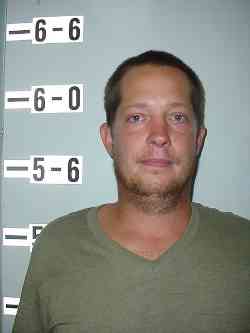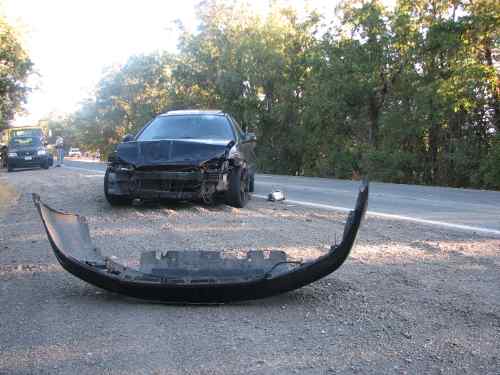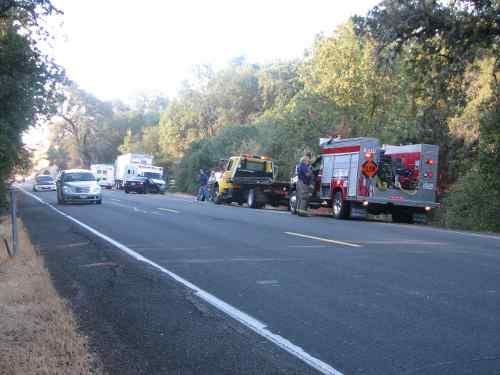LAKEPORT, Calif. – A local man accused of embezzling funds from the Lucerne Alpine Senior Center will stand trial on the charges, a judge ruled Thursday.
Judge Andrew Blum made the decision after hearing about two and a half days of testimony in the case of Rowland James Mosser, 66.
Mosser, who served as the center's executive director from 2002 to 2005, is alleged to have taken an unspecified amount of funds from the center between Jan. 1, 2005, and Aug. 12, 2005. He's charged with two felony counts of embezzlement and two felony grand theft counts.
Blum, noting the burden of evidence for a preliminary hearing is not the same as trial, said he found there was strong suspicion to hold Mosser for trial on the charges.
Day three of the preliminary hearing featured two witnesses – Aura Thomas, who had been a bookkeeper for the center from early 2004 until September 2005, and Diane Plante, a certified public accountant who was called in by the center in September 2005 to help understand its finances and who later was hired by the District Attorney's Office to do a forensic examination of the center's books.
Thomas, who had been a volunteer at the center and had some initial financial training from Yuba College, took over from Brenda Pier, who left at the end of 2004 after seven years as the center's bookkeeper. Thomas recounted calling Pier frequently – and even once driving to her home – for advice and guidance, and needing her help for the center's reports to nonprofit regulatory agencies.
Shortly before she left she had to turn over the center's QuickBooks password to a board member, which she said neither she nor Pier agreed with doing.
When Deputy District Attorney Gary Luck asked Thomas about her relationship to Mosser, she said, “Rowland is my friend,” and added that she wasn't happy to have to give testimony in the case.
“I don't believe that Rowland took any money from the center,” she said.
Thomas said the center's accounts required two signatures on each check. One of their food vendors, Sysco, received a judgment against the center and levied its accounts, taking much of a large check that had been deposited into a center bank account.
“At that time it became very clear that it was not safe to leave large amounts of money in the senior center bank account,” and that's when the center's accounting went to a cash basis, she said.
She noted later in her testimony about the Sysco action on the bank account, “I remember that being a really big blow to the center,” with a lot of juggling going on.
With the work becoming more “chaotic,” Thomas said she got behind in her bookkeeping entries.
She explained that reimbursement checks written to Jayne Mosser, Rowland Mosser's wife, were a way of tracking funds the center spent. Jayne Mosser would be given center funds to buy things and then would receive a check for the purchases after presenting Thomas with receipts.
Thomas said Pier said they needed to do something to fix the center's bank accounts, and that she felt they should go back to how it had been before going to a cash basis because “it placed us at a great liability.”
Eventually, Thomas said the books became “cloudy” because of all the checks that had been printed for accounts payable but hadn't cleared the bank account and weren't reflected in the center's financial reconciliations. At one point, she and Pier voided all of the checks and reprinted them to try and make the books more accurate.
When Thomas left around Labor Day of 2005, she offered to help sort through the mess. She said the center didn't express an interest in having her help and she really wasn't interested “because it was a political nightmare at the center.”
Plante, who works both with her father, John Tomkins, at his Lucerne office, as well as having worked with John Robertson in Lakeport to audit school districts and nonprofits, has a QuickBooks certification and also teaches a QuickBooks course at Yuba College.
She said she was asked to come in and help the center understand its books in September 2005, but did a limited amount of actual bookkeeping. Plante later was retained by the District Attorney's Office, for which she provided analysis on the center's books.
As she was going through QuickBooks, Plante said she would make adjustments and then put her initials on them.
She estimated that she spent between 50 and 75 hours working on the center's books, spending half a day a week at the center while trying to match the paper trail with the accounting transactions, a process which she said took time.
Plante said she found about 200 transactions that weren't accounted for; in those cases, QuickBooks showed that a transaction happened, but the bank showed it didn't clear.
Luck presented an exhibit which Plante had generated, a profit and loss statement that showed the center had a net profit of $26,000 from Jan. 1 to Aug. 15, 2005. An accrual document for the same period showed a net income of $76,000 for the same period.
Plante said she was approached by the District Attorney's Office in 2009 and asked to do a detailed forensic review of the senior center books. She said she took the QuickBooks information and “tried to align it as best as we could with what really happened.”
She said she did a line by line detail, trying to understand the different transactions for 2005, and did the same for the years 2003, 2004 and 2005. An analysis of revenues for 2003 and 2004 showed fewer inconsistencies than in 2005, she said.
She said she believed that most of the checks written to Jayne Mosser for tracking purposes actually were cashed.
In 2004, very few checks had not cleared the center's accounts, while in 2005 many checks hadn't cleared. In 2005 there was an increase in vendors not receiving money, she said.
Plante also created a graph for January through August in the years 2004 and 2005 to compare cash income. She said 2004 had a consistently higher level of income than in 2005.
During cross-examination by defense attorney Jacob Zamora, Plante said when center officials first asked her to come and look at the books, “The word fraud was being used and at that time I declined to do an audit.” She said then-center Board Chair Jim Swatts was suggesting fraud took place.
Later, with witness testimony past, Luck sought to enter several evidentiary items, including a copy of Jayne Mosser's bank statements, where he said Rowland Mosser was depositing his checks. Zamora objected, accusing Luck of bootstrapping her into the case.
“It's his paycheck, he can do anything he wants with it,” said Zamora, contending it wasn't relevant to the case.
Blum said he found the information relevant for a couple of reasons, one being that it showed motive. The evidence showed that the account was closed in early 2005 and the family was broke. “That's a motive to steal,” he said, accepting the item into evidence over Zamora's objection.
Luck also wanted to enter several other pieces of evidence, including a reimbursement to Jayne Mosser for purchasing t-shirts for a rubber duck race that had actually been purchased by Bill Ellis, the center's former treasurer. Another exhibit showed that Jayne Mosser had received reimbursement for power and other utilities to her home.
Zamora said Luck had never come to him to ask about entering those exhibits, so the defense hadn't been able to prepare. Blum agreed not to receive several of the exhibits.
During closing arguments, Zamora told the judge, “We have no evidence that a crime was committed in this case,” adding that Plante had stated that she didn't see evidence of a crime.
He suggested Mosser was trying in vain to keep the center going.
If fraud had in fact been involved, Zamora suggested the Plante should not have gone in and started making changes in QuickBooks, which he said was “the crime scene” if there was a crime committed.
He cited evidence from previous witnesses who maintained the center always had struggled.
Zamora said there was no indication that Mosser took money. “I think they've established a lot of bad accounting.”
Luck, who accused Zamora of misinterpreting testimony, said Aug. 12, 2005, was the last day an entry was made in QuickBooks – before Plante's arrival – and that was the same day that Mosser resigned.
“Mr. Mosser had motive to steal, he had opportunity to steal,” Luck said.
Luck said the Mosser family was solvent in 2002, 2003 and 2004, but when their funds started disappearing in late 2004 and early 2005, that's when he alleged the senior center's daily financial operations changed.
“He had the opportunity because all cash, all financial transactions flowed through his fingers directly,” he said of Mosser.
Luck accused Rowland Mosser of fraud, which Luck said Mosser created through the center's environment.
“The evidence also shows that vendors were not being paid,” said Luck. “What happened to all that money? I submit to you that it ended up with Mr. Mosser.”
Zamora said there was more speculation than evidence, and the law was clear – speculation can't be used for a holding order for a trial.
There was nothing to substantiate that Rowland Mosser had an extravagant lifestyle, Zamora said.
He said there was no evidence of a crime, and that all the hearing had proved is that the center is a great place for seniors and that Mosser was trying to keep going.
Blum said the standard for a preliminary hearing is “strong suspicion.”
He continued, “Several things are very clear, that late in 2004 and through 2005, the center was struggling financially.”
It had always struggled, but not as bad as it did during that time, he said.
In January 2004, its bills were all paid, Blum said. Later that year, bills started to skyrocket. By August of 2005 the center owed in excess of $80,000.
“That's a startling fact,” he said.
At the same time, the center changed its accounting practices. Blum said he didn't think Plante had caused any problems by making change in QuickBooks, as she had initialed them.
“Clearly there's a motive,” said Blum, noting the Mossers were going through financial difficulties, although he said that isn't proof.
Blum also found that it was a “very bizarre” accounting technique to write Jayne Mosser checks she wasn't entitled to receive.
He continued that he had a strong suspicious that Mosser, in his capacity of trust as the center's director, misappropriated funds, and ordered Mosser held to answer to the charge.
Mosser waived the right to be arraigned within 15 court days because of his attorney's calendar. The matter is set for arraignment at 8:15 a.m. Nov. 8 in Department 2.
E-mail Elizabeth Larson at This email address is being protected from spambots. You need JavaScript enabled to view it. . Follow Lake County News on Twitter at http://twitter.com/LakeCoNews and on Facebook at http://www.facebook.com/pages/Lake-County-News/143156775604?ref=mf .













